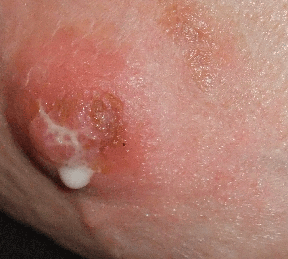

Injured nipples provide a highway for bacteria to enter the breast. During the normal mechanics of breastfeeding, milk travels up from the large ducts near the nipple as the milk ejection recedes, drawing saliva from the baby and organisms from the nipple skin as well. This process allows the alveoli to monitor how much milk was taken and the mother's immune system to monitor her and the baby's microbial environment and respond with antibodies. It also opens the mother to breast infection if her nipple becomes colonized or infected. Bacteria produce biofilms composed of proteins and complex sugars (polysaccharides) that help shield them from the immune system and water washing. Soap and mechanical disruption are required to eliminate biofilms.
Sore, reddened nipples have cultured Staph species in several studies.

Washing with mild soap and water 2-3 times a day was enough to cure 33% of these staph infections in Stephen Grave's et al study of breastfeeding women with nipple pain and redness. Verity Livingston also identified soap and water washing as important to removing staph organisms from infected nipples, along with systemic antibiotics to prevent mastitis, especially when the nipples have a purulent discharge.
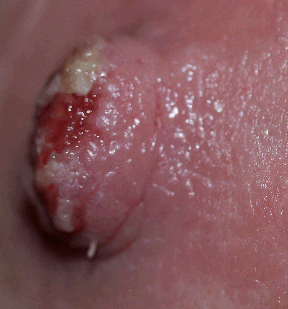
It's wise to counsel mothers having breastfeeding problems to wash their nipples with mild soap and water 2-3 times a day, especially if the nipples are injured. Once breastfeeding is comfortable, using soap in the shower once a day is helpful. Since I've been giving this advice to mothers as soon as they call for an appointment, I'm seeing fewer of them proceed to mastitis and abscess.
Body structures need to line up properly in order to work well. Intrauterine positioning can cause deformation of the jaw so the condyle of the mandible no longer fits nicely into the little hollow in the temporal bone of the skull, limiting mouth opening. During the birth process, ligaments or muscles on one side of the jaw can be stretched, displacing the condyle from the little disk that normally cushions the joint. If the condyle no longer tracks with its' disc, the jaw will be unstable on that side. If you place your fingertips gently over the TMJ while the baby sucks, you will feel a popping sensation as the baby opens the mouth when the disc clicks back into place. It is also possible for the disk to be displaced and not return to it's normal position.
Babies having TMJ problems may have difficulty opening the mouth widely enough to latch on deeply, or they may have difficulty getting into a smooth sucking rhythm. Both can cause low milk transfer.
If you suspect that the TMJ is making the baby's sucking efforts less successful, you can try some fingertip pressure above and behind the joint on the affected side (see photo). If this is the right intervention, the joint will feel more stable and the baby will immediately suck more effectively. In this case, you can teach the mother to support the same area while she nurses, particularly when that side of the jaw is facing upward. Mother's arm may provide sufficient support for the jaw when the affected side is facing downward.
Remember that jaw support doesn't eliminate the problem, but may help the baby compensate. Body work (osteopathic or chiropractic treatments, physical or massage therapy, etc) can help restore normal biomechanics. The muscle activity of breastfeeding can also help normalize the bony parts of the face over time.
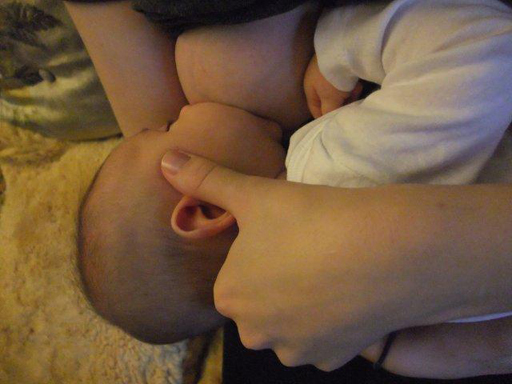
While many infants suck properly within days of a frenotomy, some continue to suck weakly, with poor suction (negative) pressures. One method to help gradually increase sucking pressures is to slowly increase the amount of vacuum the baby needs to exert to get milk. One way to do this is to use a lactation aid consisting of a 36 inch 5-french feeding tube placed in a bottle of milk.
At first, hold the bottle high well above the breast so milk will flow down the tubing easily. Find a position for the bottle where the baby uses a 1:1 or 2:1 suck:swallow ratio with a soft, unstressed swallow. Then move the bottle down an inch or two, so the baby needs to work a little harder to generate the same flow. Assess to ensure that the baby is getting sufficient milk (less than 3:1 suck:swallow ratio during active sucking).
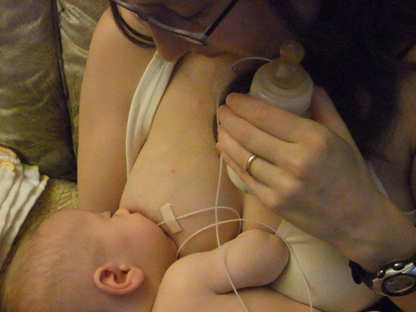
Show the baby's mother how to identify active feeding. Advise her to lower the bottle another inch or two every day or so, as the baby tolerates. If the baby gets fussy or fails to have a good feeding, she will need to raise the bottle higher. She may find that the baby needs less assistance at some feedings (typically first thing in the morning when the breasts are more full, and when well rested after a nap) and more help at others. This is fine. We expect that over the course of several days or weeks, the baby will be able to exert sufficient vacuum to breastfeed without the lactation aid. If little to no progress is made, assess the baby again to ensure that there are no other anatomical or medical challenges.
More information on different lactation aids/nursing supplementers and nuances of their use can be found in Selecting and Using Breastfeeding Tools.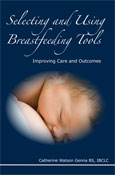

Share your own nuances. Email your submissions to: vincent.genna@gmail.com. Please include "comment" and the title of the post in your subject line, and your name and credentials if you would like them posted.